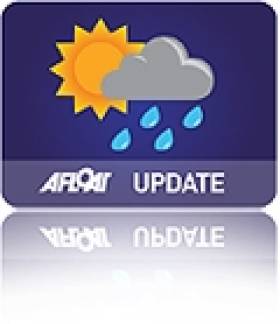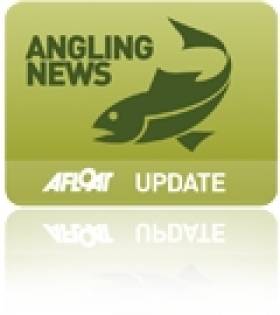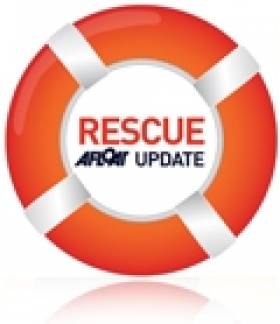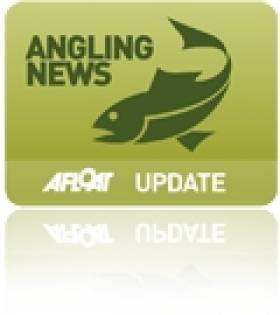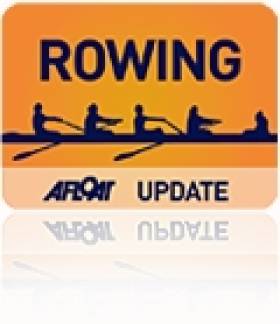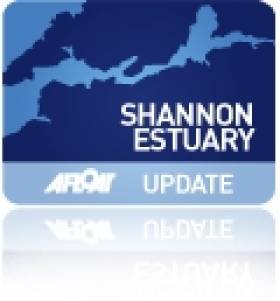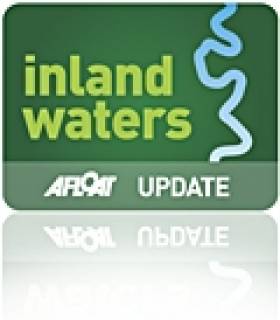Displaying items by tag: Limerick
#cityone – The Ilen School CityOne Design Competition invites designers to submit designs for the sails and hull of a new CityOne performance sailing dinghy. Four of these CityOne dinghies are currently under construction through an innovative social educational programme in Limerick City.
As Afloat reported previously, The CityOne dinghy is a new performance dinghy, developed by the Ilen School and designed by naval architect Theo Rye as a legacy project of Limerick City of Culture 2014.
This exciting and challenging competition is open to all designers and high levels of creative freedom are encouraged for the task of designing a concept for application to the hull and sails.
Submissions must be sent by email to [email protected] There is no entry fee.
Three designs will be chosen by a judging panel and each single participant and group design chosen will receive €500* and enjoy the opportunity of seeing their designs creatively applied to the City One sail and hull before they take to the water for racing on the River Shannon, Limerick. The judging panel may also award additional non-monetary, special mentions.
Closing date for submissions Friday 25th July 2014. More on this on the City One competition page here.
#cityone – An international and local team of boat builders and naval architects have assembled at the Ilen School, Roxboro, as part of the Limerick City of Culture 2014 celebrations. The school is well underway towards the rollout of its Limerick City of Culture Sport and Legacy Project, which involves, as Afloat reported earlier the design and build of a new innovative sailing dinghy for Limerick City and a fleet of new 23′ rowing Gandelows.
The school, which is devoted to excellence in teaching and learning through the medium of boat building and related crafts, offers to the local and wider community, direct involvement in boat building, rowing, sailing or visits to the school workshop, to see at first hand the ongoing work.
Limerick Floods As Spring Storm Assaults Ireland
#StormBrigid - Two canoeists in trouble off Spiddal Pier were attended by lifeboats from Galway the Aran Islands yesterday afternoon (Saturday 1 February) as Storm Brigid made for an inauspicious start to spring.
The worst of the weather was experienced in Limerick, with hundreds evacuated from their homes as the River Shannon burst its banks, and images of the city under many feet of water broadcast worldwide.
The Irish Independent puts the cost of damage from this weekend's weather at 'millions'.
In Galway – which suffered from another spate of flooding as high tides and storm-force winds assaulted the West coast – volunteer lifeboat crews from Galway RNLI and Aran Islands RNLI, along with the Shannon-based Irish Coast Guard helicopter, were tasked to Spiddal Pier but stood down when the two canoeists managed to make it ashore.
RTÉ News reports of further structural damage on islands in Galway Bay, as well as severe flooding in parts of Co Kerry.
And an investigation has been opened after a grim discovery this morning on a beach in Clifden, Co Galway, where a local person found a human skull washed up after the storm.
The East coast wasn't spared the extreme conditions, either, with Clontarf in North Dublin seeing giant sandbags placed along the seafront to hold back floodwaters from homes and shopfronts.
The wooden bridge to the Bull Wall was also closed by Gardaí and Dublin City Council.
New 'City One' Sailing Dinghy Design Built for Limerick's River Shannon
#cityone – A new Irish sailing dinghy design, the LC1, is under construction in Limerick which promoters say will have a 'lively performance but at the same time, the relatively broad beam and inherent stability should mean it is not difficult for the inexperienced.
The City One Limerick Dinghy from the AK. Ilen Company is designed for use on the Shannon as it passes through the city and opens into estuary on its way to the Atlantic. The LC1's launch will tie in with celebrations of Limerick's 2014 City of Culture celebrtations.
The design of the boat is from the drawing board of Theo Rye.
The keel of the LC1 is laid and according to the latest progress reports the keel of the prototype is laid, and within the next few weeks, some of the world's 'finest craftsmen' from New Zealand, North America and elsewhere will be in the Ilen Boat Building School working in conjunction with Limerick's boatmen on the project.
The design marries traditional and modern design elements. Most modern dinghies are factory made in fiberglass or plastic. The LC1's hull is specifically for relatively simple construction in timber and plywood with a hard chine and constant radius underside.
Many thousands of dinghies of this type were built in the 1950s and 60s, often by amateurs at home. The relative simplicity of the design means no especially difficult boatbuilding skills will be necessary, so the satisfaction of construction is brought into the reach of nearly anyone with enthusiasm and time. The pride of achievement in helping build a boat and then sailing it will excite and interest children and adults, and there are numerous benefits and educational opportunities associated with this process. The materials specified are reasonably cheap and easy to source.
The use of epoxy to coat the timber and fillet the ply together, and the painted finish, will help reduce the maintenance and upkeep often associated with wooden boats, and any repairs necessary should be simple to do as well. The design is also intended to quickly self-drain after righting from a capsize, a feature of many modern designs; "coming up dry" has the benefit of allowing the boats to be left safely on moorings afloat without covers if necessary.
The raked stem reflects that this design is not driven by a rating rule;the stem allows the bow to retain buoyancy when driven hard, and it often means a less abrupt stop in the event of a collision, too. That points to the intention that the boat should be user friendly both for novices as well as more experienced sailors.
In the right hands, the design should enable lively performance and keen racing; but at the same time, the relatively broad beam and
inherent stability should mean it is not difficult or intimidating for the inexperienced or less confident.
The hull shape is intended to be tolerant of crew weight, and allow crews of two, three or even four people, making it a design suitable for teaching sailing with an instructor on board. The high boom and "gnav" mean there is less likelihood of knocking heads with the boom or kicking-strap, and the clear Mylar sails enable good visibility.
The size of the jib is such that even relatively small crew members should find it easy to trim, and without a trapeze no special athleticism is required. The simple layout and lack of complexity in the rig should also mean rigging is quick and easy, helping get people onto the water rapidly and easily.
The Shannon river has always been central to the history and life of Limerick, and sailing right in the center of the city should reawaken an awareness of its fundamental marine and riverine dimension and perspective.
The unique topography of the area brings its own challenges: balancing the need for a relatively generous sail plan to keep the boat moving in the lee of the city buildings with the requirement for a user-friendly and safe boat to sail in relatively confined waters.
The confines of the river mean short legs and lots of manoeuvres, so the hull is rockered to enable quick tacks; there is no spinnaker. The design is also intended for safety in less sheltered waters like the lower Shannon estuary. The relatively high freeboard and built in buoyancy should make it safe under reasonable conditions on any stretch of water from sea to lake to river.
More on this from the AK. Ilen Company here: www.ilen.ie
Flycasting Festival Lands Limerick a Reel Gathering event
#flycasting – The story of one a former World Champion from Limerick will be celebrated in a new festival In Castleconnell, details of which were announced today.
The John Enright Castleconnell Flycasting Festival will attract dozens of competitors from all over the world to the banks of the River Shannon in Castleconnell from Friday 11th to Sunday 13th October, 2013.
The inaugural event, which culminates in the Spey O Mega International Flycasting Championship, forms part of the Gathering Ireland 2013 project.
In 1896, local man John Enright became the Fly-Casting Champion of the World at Wimbledon Park Lake in England for Distance Casting Competition. He also won First Prize in all five events on that famous day. From 1890 to 1905 his success rate at Fly Casting on the International Circuit was phenomenal. The three-time World Champion, his World Record distance of 186 feet with a 20 foot Castleconnell Rod at Central Park in New York also stands today.
According to festival organiser, John Mac Namara: "John Enright's international exploits brought fame and glory to his native village of Castleconnell. Castleconnell Fishery became an International Fishing Centre and home of the famous Castleconnell Rod, while Castleconnell village was referred to as 'Little Paris'. This event is our way of celebrating this local figure and his contribution to putting Castleconnell on the international map."
Mr. Mac Namara added: "The event will feature fly-fishing instruction for all the family; an exhibition of fly-casting by 2010 World Flycasting Champion Ruairi Costello from Scarriff, an exhibition of John Enright memorabilia, riverboat trips; guided walks; street-based and evening entertainment; and a display of fly-fishing and casting by amateur and professional fishermen, culminating in the Spey O Mega International Casting Championship, which will attract expert competitors from around the world."
The John Enright Castleconnell Flycasting Festival is one of 161 Gathering Limerick festivals and events taking place during 2013. The Programme of events is being coordinated by the Limerick Gathering Team at City Hall. Other events scheduled to take place during the coming weeks include the Legends International Tag Rugby Festival (25-26 Oct), Limerick International Fashion Design Week 2013 (29 Oct-1 Nov), and Richard Harris International Film Festival (6-8 Dec).
For more see visit www.johnenrightfestival.com
#watersafety – Limerick City Council is urging members of the public to report damaged, stolen, missing or retrieved ringbuoys after a lifebuoy box and pole were vandalised at Athlunkard Bridge.
A member of a local boat club last night reported the missing lifebuoy to the Council's Water Safety Development Officer who on inspection determined that the lifesaving device was either stolen or thrown into the River Shannon. The lifebuoy, which is due to be replaced in the coming days, is one of 16 lifebuoys to have been replaced around Limerick City since the beginning the year.
According to Valerie Stundon: "Lifebuoys are crucial to preventing drownings in Limerick's waterways. The damaging or removal of such vitally important equipment endangers lives which is why I urge members of the public to report such incidences directly to Limerick City Council or via www.ringbuoys.ie ."
Commenting on last night's incident at Athlunkard Bridge, the Council's Water Safety Development Officer said: "The lifebuoy box and pole were ripped from the ground and more than likely thrown into the river. A report was received from a member of Athlunkard Boat Club who reported that some people who have been jumping into the river have taken the buoy, got rid of the ring and have used the rope to make a swing by tying it on to a tree. I have now requested the Council's Roads Department to have a new pole, lifebuoy box and buoy erected during the coming days."
Ms. Stundon confirmed that a lifebuoy box and pole at Corbally Baths have recently suffered a similar fate as the Athlunkard Box and Pole.
She continued: "Keeping in mind that a stolen ringbuoy means a stolen life, it is regrettable that a very small minority of people continue to engage in stealing or vandalising ringbuoys, and fail to appreciate the potentially very serious consequences of their actions. The WSDO would ask members of the public to refrain from interfering with any lifebuoy around the City and only use them in the event of someone entering the river and requiring assistance. Lifebuoys are not a toy."
Limerick City Council has 53 lifebuoys located around the City. 45 replacements were made in total in 2012 with a recurrence for replacements of 3-4 times at some locations. 16 have replaced to date in 2013.
Members of the public are requested to report damaged, stolen, missing or retrieved ringbuoys via www.ringbuoys.ie , or by emailing [email protected] or calling 061-407100.
Two Prosecuted For Illegal Fishing of Spawning Salmon
#Angling - Two men have been prosecuted in Co Tipperary for illegal fishing of spawning salmon.
Michael Harding of Bansha and Neill Collins of Cullen were prosecuted by Inland Fisheries Ireland (IFI) following investigations on the River Aherlow at Angelsboro, Co Limerick on 2 January this year.
IFI fishery officer Noel Power told Judge William Early at a sitting of Fermoy District Court on 3 May that both men has been observed fishing by night with a lamp and a spear.
Having heard the evidence, Judge Early convicted both men and levied fines on each: €350 for Collins and €300 for Harding, who informed the court he was unemployed. Both men were also ordered to pay costs amounting to €418.90.
"Wild Atlantic Salmon are part of our heritage," said Minister Fergus O’Dowd following the prosecution, "and the killing of spawning fish is an environmental outrage.
"I once again commend the work of IFI staff, working in remote areas, in the worst of weather, late at night protecting our wild salmon."
IFI reminds all anglers that interference with fish over their spawning beds is a serious offence, and that its staff are involved trying to stamp out this activity.
Much illegal fishing takes place at night, and IFI staff patrol the rivers during winter nights to ensure the protection of fish stocks.
"This illegal fishing is both barbaric and a threat to spawning salmon," says the fisheries agency. "Spears and modified forks are sometimes used in tandem with lights in the illegal killing of spawning salmon."
Disruptive Winds Cut Short Limerick Regatta
# ROWING: Gusting winds and the damage caused by a launch to one of the lines marking the lanes resulted in Limerick Regatta being suspended. Quite a few of the finals had already been completed. Sinead Jennings won the women’s senior single sculls and Colm Dowling the men’s.
Limerick Regatta, O’Brien’s Bridge, Saturday (rowing suspended due to winds):
Men, Eight – Intermediate: 1 St Michael’s, 2 Trinity. Junior 16: 1 Colaiste Iognaid, 2 Presentation College, 3 St Joseph’s A. Masters: 1 Shannon/Clonmel, 2 Waterford, 3 Shannon.
Four – Senior: 1 St Michael’s A, 2 St Michael’s B. Novice, coxed: 1 NUIG B, 2 Trinity, 3 NUIG.
Pair – Senior: 1 St Michael’s, 2 St Michael’s B, 3 Clonmel.
Sculling, Quadruple – Senior: 1 Clonmel/Castleconnell, 2 Garda, 3 University of Limerick. Novice, coxed: 1 Commercial, 2 Galway, 3 St Michael’s.
Double – Junior 18A: 1 Commercial A, 2 Athlone A, 3 St Michael’s A.
Single – Senior: 1 Commercial (C Dowling), 2 Clonmel (Prendergast), 3 Castleconnell (Quinlan). Intermediate: 1 Clonmel (Prendergast), 2 Garda (Kelly), 3 Trinity (McElroy). Junior 18A: 1 Shannon (Carmody), 2 St Michael’s (O’Malley), 3 Athlone (Egan). Junior 16: 1 Castleconnell (Whittle), 2 Cork (O’Connell), 3 Waterford (Goff).
Women
Eight – Junior 18: 1 Galway, 2 Shannon.
Four – Novice, coxed: 1 Commercial, 2 Galway, 3 NUIG A.
Pair – Senior: 1 Muckross, 2 Commercial, 3 NUIG.
Sculling, Quadruple – Novice, coxed: 1 Cork, 2 Athlunkard. Junior 18A: 1 St Michael’s, 2 Galway A, 3 Castleconnell. Junior 16, coxed: 1 Carlow, 2 Neptune, 3 St Michael’s B.
Single – Senior: St Michael’s (S Jennings). Intermediate: 1 St Michael’s (O’Keeffe), 2 Commercial (Hogan), 3 Lee Valley (Corcoran).
Master Plan for Shannon Estuary Launched
#Shannon - The Shannon Foynes Port Company has launched its master plan for the development of port infrastructure and services along the Shannon Estuary.
RTÉ News reports on the 30-year plan, titled Vision 2041, which will involve the construction of a new deepwater birth at Foynes, the development of warehousing and facilities across 300 acres of additional land - and the potential reopening of the Foynes-Limerick railway line, which has lain dormant since 2001.
As one of the deepest waterways in Europe, the estuary is also in prime position to take advantage of the new 'post-panamax' supertanker shipping era, and talks on securing future foreign direct investment as a priority.
As previously reported on Afloat.ie, submissions for the accompanying strategic plan for the development and management of marine-related industry and tourism in the Shannon Estuary region closed last week.
The Draft Strategic Integrated Framework Plan (SIFP) for the Shannon Estuary, the first of its type to be developed in Ireland, identifies a number of strategic sites along the estuary for future possible development in the areas of industry, tourism, energy, fishing and aquaculture and marine-related industry.
Notice of Upcoming Restrictions at Sarsfield Lock
#InlandWaterways - Waterways Ireland wishes to advise masters and owners of vessels and boats on the Shannon Navigation that Sarsfield’s Lock in Limerick will be operated on restricted service from Thursday 28 February to Saturday 9 March 2013.
During this time the lock will only operate from 10am to 12.30pm daily.
Masters and owners are requested to ring the lockkeeper at 087 797 2998 one day prior to making their passage.





























